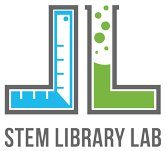by Callie Oliver | Jan 4, 2019
(MS.PS1A.d) In a liquid, the molecules are constantly in motion and in contact with others; in a gas, they are widely spaced except when they happen to collide. In a solid, atoms are closely spaced and may vibrate in position but do not change relative...
by Callie Oliver | Jan 4, 2019
(MS.PS1A.c) Gases and liquids are made of molecules or inert atoms (the noble gases) that are moving about relative to each other.
by Callie Oliver | Jan 4, 2019
(MS.PS1A.b) Each pure substance has characteristic physical and chemical properties (for any bulk quantity under given conditions) under normal conditions that can be used to identify it.
by Callie Oliver | Jan 4, 2019
(MS.LS2B.d) The atoms that make up the organisms in an ecosystem are cycled repeatedly between the living and nonliving parts of the ecosystem. Geochemical cycles include carbon, nitrogen, and the water cycle.
by Callie Oliver | Jan 4, 2019
(MS.LS2B.c) Decomposers recycle nutrients from dead plant or animal matter back to the soil in terrestrial environments or to the water in aquatic environments.

